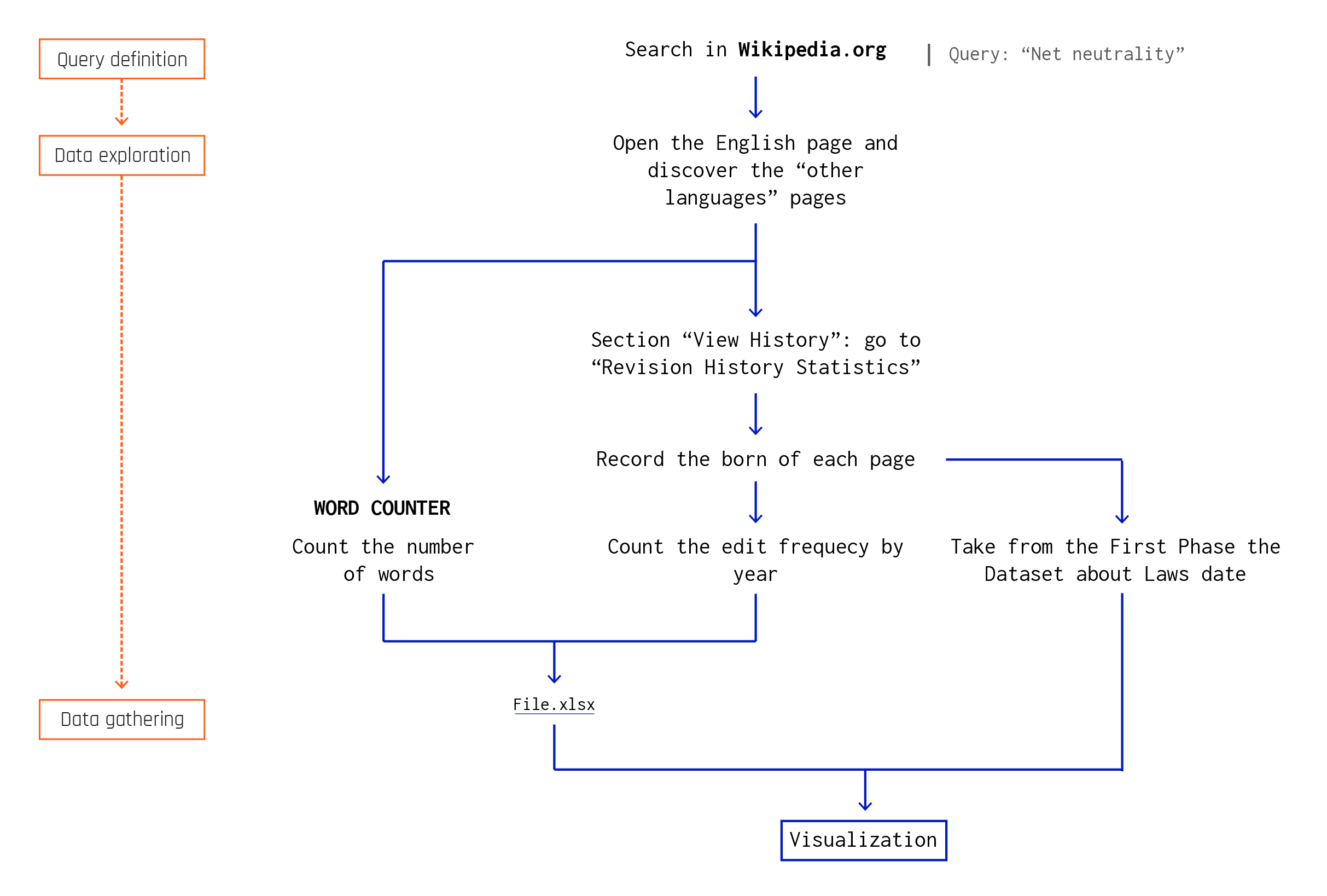Description
The visualization shows the interest by language sphere on Wikipedia. As an important source, we tried to extrapolate more information as possible to understand who is more interested on Net Neutrality. The list of languages is the first information we obtained. The languages mentioned are the languages that have a page dedicated to Net Neutrality. For other languages not written here, the page on Net Neutrality does not exist. On the left side, the orange squares specify the page length. Numbers in the table mean the number of words contained in each page. On the right side, you can read when pages were opened. Each blue bar represents the page history. The beginning of the bar corresponds to the origin of the page. The gradient helps reading the page development related one to another. We used the colour to highlight the difference of time. The shape of the bar represents the number of edits during the years (minimum height represents the page existence). We tried to figure out the opening and the edit date from the time of the appearance of Net Neutrality Laws. Because of that, we took from the First Phase the date of Net Neutrality Laws and we wrote them here above. The data are not always related, but reading the correspondence between the origin of the page and the date of Law suggested by the orange vertical lines is somehow possible.
Protocol

We used query “Net Neutrality” to start exploring Wikipedia pages. We discovered in which languages the page about Net Neutrality exists, from the English page. So, for the left side of our visualization, we counted the number of the words used by each language to talk about Net Neutrality. We used this information to distinguish the pages providing only a definition of the phenomena to the pages dedicating a lot of contents to describe more deeply the phenomena and the arguments correlated. We went to the “Revision History Statistics” section in each page, inside the “View History” section, to record the date of the origin. We extracted the information about the edits from the same section. We collected the edits by year, to see when each sphere of language wrote or modified the contents. The information about Laws we added comes from the First Phase. We realized that most of the languages with a Wikipedia page about Net Neutrality are the same languages spoken in the countries protected by the Law. So, we considered this information interesting. Comparing these causes is possible during the reading of the graph.
Data
Timestamp: November 2017
Data source: Wikipedia.org, XTools - Wikipedia Edits, Voyant Tools - Word Counter
Download data (16KB)
We counted the number of words included in each page. A lot of information about Wikipedia pages can be collected from the “View History” section. We focused on the data that can help us to understand the relevance of the page. We collected the whole dates of the origin of the page, but we decided to categorize them by year to make reading the visualization easier. The number of the edits is showed by years.